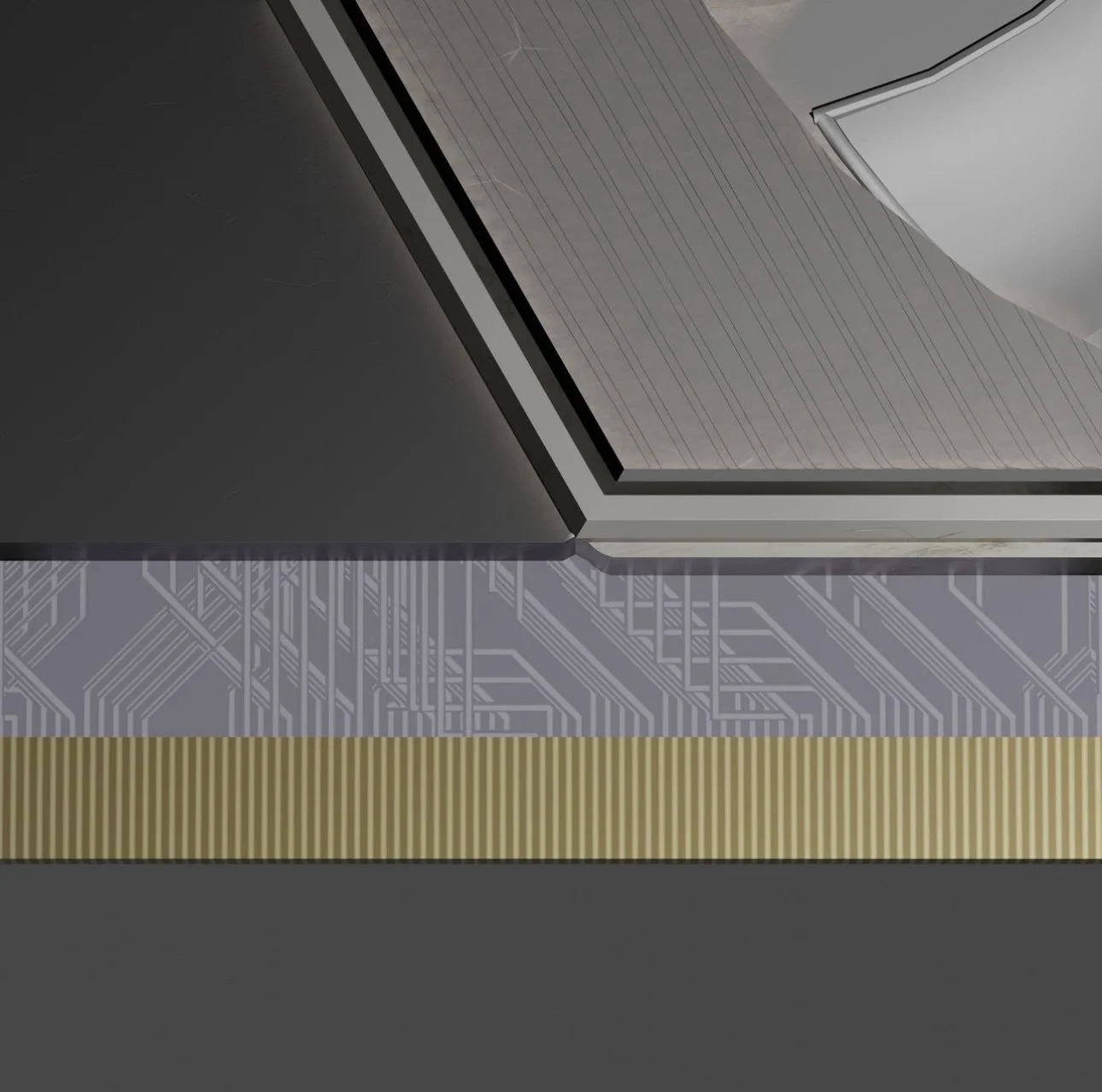Interfaces for dead dreams
Digital sculptures depicting the decaying infrastructure of America
“You see America
in the bus depots
The downtrodden
and temporarily impoverished millionaires
who look down at those
who accept the facts of life
Flaunting a class they will never be”
-Daniel Wright, Going Home on a Greyhound Bus
What is a true depiction of America? A country and a culture so vast contains so many different facets of life that accounting for all of it seems impossible. Wright’s poem, however, gives us the answer in its very first line: You see America. To construct an idea means taking in the totality of visual input, without being selective about what you see.
Interfaces for Dead Dreams is a series of digital sculptures which attempt to depict a “True America” based on the ever-evolving infrastructural landscape Americans find themselves immersed in. Utilizing 3D scans of architectural ornamentation from late nineteenth and early to mid-twentieth century buildings, appropriated models from free 3D asset websites, handmade original 3D models, imaging from film archives, video games, and social media, and procedural textures, the sculptures are constructed from the artifacts eras prior, but in the digitized form native to the current infrastructural fabric of contemporary life.
Each era of American capitalism has a distinct look which stacks on top of the identities of previous eras. With each era, a stated goal of beauty and longevity have been eroded in favor of efficiency and cost cutting. As wealth has centralized, care for the built environment has waned or been priced out of public space. In a previous era, even nodes which power invisible utilities, such as water pumping stations, were still given the kind of architectural care and grandeur afforded to parks, houses, and offices. Today, the nodes powering the internet and telecommunications infrastructure are 5G towers poorly disguised as palm trees, or haphazardly slapped onto decaying buildings.
All the while, the relentless optimism behind infrastructure carries on. In a previous era, this was building an environment for the ages, using beautiful ornamentation to give a structure a sense of importance. This importance, however, was speculative. Grand architecture in America was not built to commemorate a history and longevity, or to culminate centuries of progress, but rather to seem like achievement had been made while capitalism continued to develop. Today, it divorces from playing the role of achievement in favor of simply promising it. With each year’s slightly upgraded product, a short-term placeholder is given while continuing to promise that some day a completely frictionless reality will be achieved. From any era, these optimistic dreams feel heavier on each passing generation. As lives are downwardly mobile, dreams of enlightenment, technological liberation, or fully automated luxury feel like cruel jokes, petty insults. Longing in nostalgia for a future that won’t arrive is so over. By turning them into ephemeral digital media, something that will eventually data rot and disappear without a trace, or something that can be reinterpreted and manipulated infinitely, a real commitment to future generations can be built. Make them anything but what they are.
Part of the process for this piece was the creation of generative textures. For the circuit boards on the graphics cards, I wrote the Javascript applet above to create texture images that could be used as bump maps to give the impression of circuitry.
